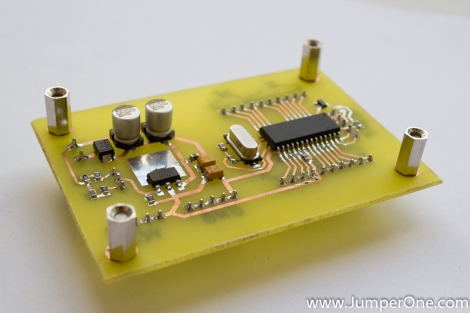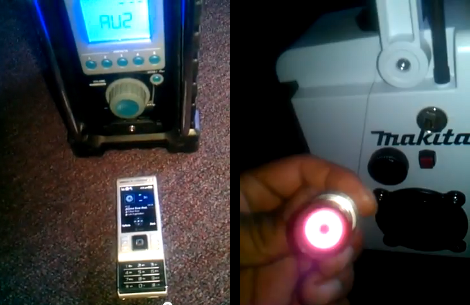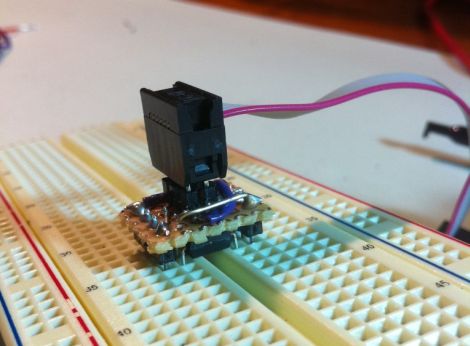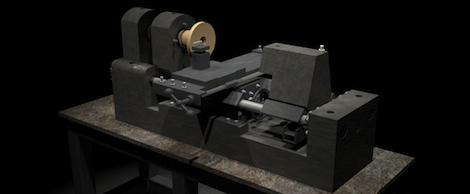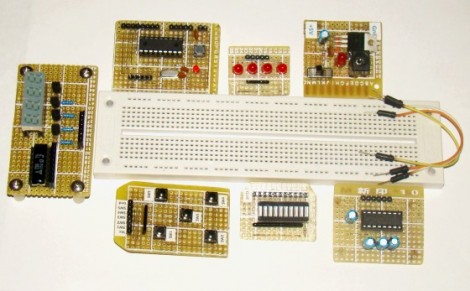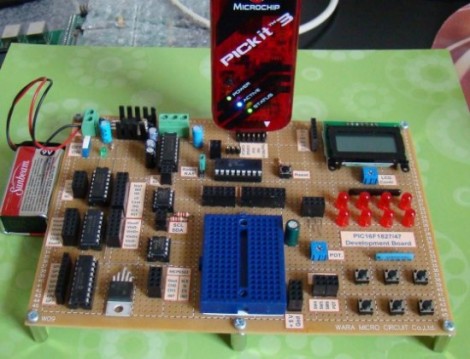
[Rajendra] built a rather impressive development board based around a PIC microcontroller. At its center, he’s got a PIC 16F1827 chip, but we think the design is easily adapted to your microcontroller of choice.
The I/O pins on the microcontroller aren’t actually connected to any of the components on the board. Instead, female pin headers neatly organize the pins grouped by their register. Jumper wires make for quick connections to all of the available peripheral devices. There’s an additional header for connecting the PICKit programmer, and the small blue breadboard lets you add your own components to the mix, or lets you utilize the board with a different microcontroller.
[Rajendra] took the time to carefully label all of the connectors, removing the guesswork (or pin counting) from the setup process. Many of the peripherals are i2c devices, and there’s a pin header to connect more, or to sniff the data using a Bus Pirate or other tool.

